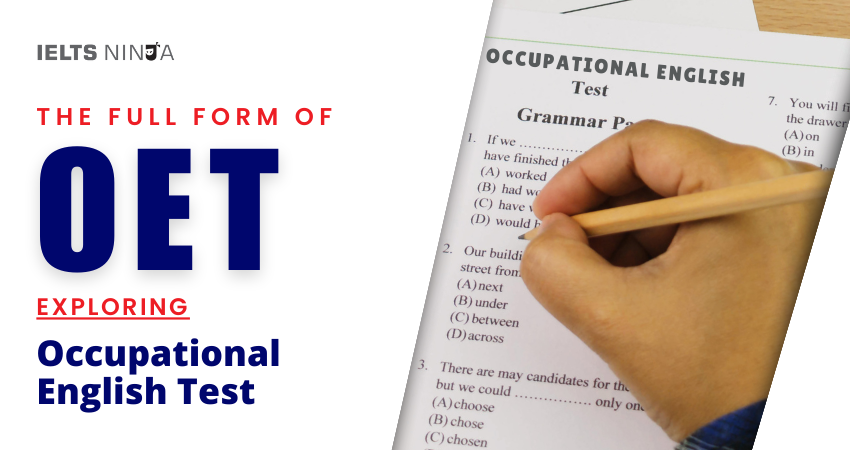The full form of OET stands for “Occupational English Test”, and it is an English language proficiency test specifically designed for healthcare professionals. The OET assesses the language skills of healthcare practitioners who are seeking to work or study in English-speaking countries. It evaluates their ability to communicate effectively and safely in healthcare settings. Here are key details about the Occupational English Test (OET):
Key Details of the Occupational English Test (OET):
Purpose:
The primary purpose of the OET is to assess the English language proficiency of healthcare professionals, including doctors, nurses, dentists, pharmacists, and other healthcare practitioners. It ensures that they have the necessary language skills to provide safe and effective care to patients and to communicate with colleagues and healthcare teams in English-speaking environments.
OETs Test Format:
The OET is available in four main versions, each tailored to specific healthcare professions:
- OET Medicine: Designed for doctors and medical specialists.
- OET Nursing: Designed for nurses and midwives.
- OET Dentistry: Designed for dentists.
- OET Pharmacy: Designed for pharmacists.
OETs Test Sections:
The OET assesses language proficiency across four language skills:
- Listening: Test takers listen to recorded healthcare-related scenarios and answer questions based on the information they hear.
- Reading: This section evaluates the ability to understand and interpret healthcare-related texts, such as patient case notes and articles.
- Writing: Test takers are required to write a letter, referral, or other healthcare-related document based on a given scenario. This assesses their ability to communicate effectively in writing.
- Speaking: The speaking test involves a one-on-one conversation with an interlocutor. Test takers discuss healthcare-related topics, role-play scenarios, and demonstrate their ability to communicate orally.
Also Read: Best online OET coaching & training academy
OET Scoring:
The OET is scored on a scale from A (highest) to E (lowest) for each of the four language skills. Test takers receive individual scores for listening, reading, writing, and speaking. To achieve a passing grade, candidates typically need to score at least a B in each of the four skills.
Use of OET Scores:
OET scores are widely recognized and accepted by regulatory bodies, healthcare organizations, and educational institutions in English-speaking countries as evidence of a healthcare practitioner’s language proficiency. These scores are used for several purposes:
- Registration and Licensing: Many healthcare regulatory authorities require OET scores as part of the registration or licensing process for healthcare professionals.
- Employment: Healthcare employers often use OET scores to assess the language proficiency of job applicants, ensuring that they can communicate effectively with patients and colleagues.
- Professional Development: Some healthcare professionals take the OET as part of their professional development to demonstrate their language skills and improve their career prospects.
Preparation of OET:
Test takers can prepare for the OET by using official OET preparation materials and resources provided by the test administrators. These resources include practice tests, sample questions, and study guides.
Test Centers for OET:
The OET is administered at authorized test centers in various locations around the world. Test takers can register for the test and choose a test center that is convenient for them.
Conclusion:
The Occupational English Test (OET) plays a crucial role in ensuring that healthcare professionals have the necessary language skills to provide safe and effective care to patients in English-speaking countries. It is a specialized test that assesses language proficiency in the context of healthcare, and its scores are widely accepted for various purposes, including registration, employment, and professional development. Preparing for the OET is essential for healthcare practitioners looking to work or study in English-speaking healthcare environments.








